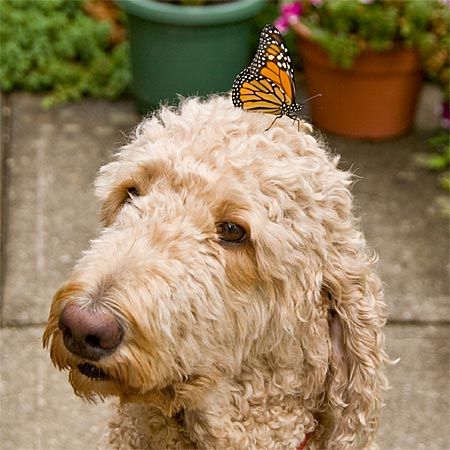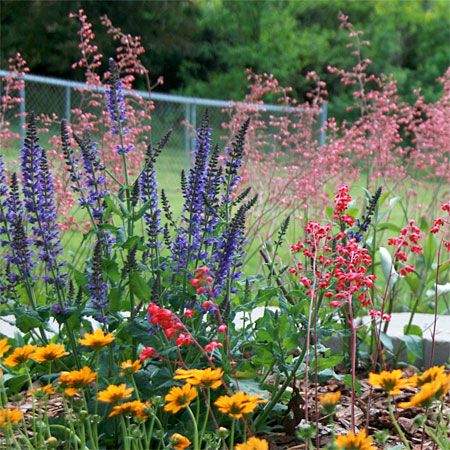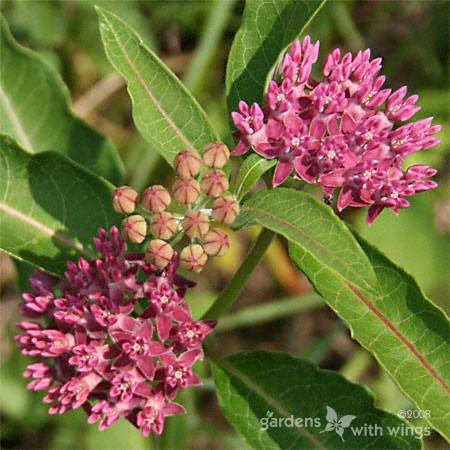Iconic is the most appropriate word to describe the Monarch butterfly. Most of us have fond childhood memories of the unmistakable orange and black beauty flitting around the blue sky on sunny summer days. They were everywhere — and their presence was so magnificent. In this article, we discuss ways to attract Monarch butterflies, their life cycle, and the plants they need to survive.
Table of contents
Their name, in Greek, means “sleepy transformation” in recognition of their ability to hibernate and metamorphize — and if you’ve ever watched it happen through a glass jar, you understand why.

If you’ve been feeling like you don’t see as many Monarch butterflies as you remember seeing 5, 10, or 20 years ago, you are not imagining things. Loss of habitat, along with pesticides and the eradication of the Monarch butterfly’s host plant (Milkweed), has resulted in Monarch butterflies becoming endangered.
When we hear about an endangered species, it’s hard not to feel helpless and insignificant. But, unlike many endangered species, you — yes, you! — hold real power to make a positive difference in protecting the Monarch butterfly and helping their populations thrive right in your own backyard. Here are some easy ideas to get you started. Let’s make a positive difference together!
How to Attract and Keep Monarchs in Your Butterfly Garden
Helping Monarch butterflies to thrive in your garden requires some basic knowledge of their life cycle and migration paths so that you know how to support them through these two journeys they take in their lifetime. You will also need some ideas for garden layouts and plants they love.
Buy on Amazon: How to Raise Monarch Butterflies, A Step-by-Step Guide for Kids by Carol Pasternak
The Monarch Butterfly Life Cycle
- The Monarch life cycle begins when the female Monarch butterfly lays her eggs individually on separate milkweed leaves.
- A few days later, the eggs hatch into the larva stage, which gives us the Monarch caterpillar.
- The Monarch caterpillar needs to grow as much as possible in the next two weeks, so it feasts on the only thing it eats — milkweed.
- Fully fed for the next phase of its life, the caterpillar enters the pupa stage by hanging upside down from a plant stem and spinning a protective chrysalis around itself.
- A couple of weeks later, the caterpillar emerges from the chrysalis as a fully-formed, adult Monarch butterfly.
- If it isn’t time to migrate, adult butterflies immediately begin the Monarch life cycle again — that is, after they find a meal of nectar from pollinator plants nearby.
- For more information about the butterfly life cycle, here is an interesting article to read ‘4 Stages Of The Butterfly Life Cycle‘.
This is where you come in. So, let’s get our hands dirty and learn how to create a butterfly-friendly garden!
Garden Tips to Attract Monarch Butterflies
Plant Milkweed
Grow milkweed for the Monarch butterflies and Monarch caterpillars to eat, and they will come. Plant milkweed in full sun, in groups of at least six plants, or those hungry, hungry caterpillars will run out of food. Water your plants sufficiently so they stay healthy. That is how they will produce sufficient nectar, for all those amazing butterflies that will start to visit your garden. Also:
- Avoid the use of pesticides and opt for natural solutions when possible.
- Provide landing pads near water sources so the butterflies can drink safely (mud puddles are ideal since they allow the butterflies to get necessary minerals from the soil, too.)
- Create safe spaces for the butterflies to roost at night, like trees and shrubs
- Position large, flat rocks in the sun so that the butterflies can warm themselves in order to be able to fly again
- Trim plants carefully — there might be a life cycle in progress under a leaf!
- Avoid using peat-based compost.
- Go the extra mile, and register your garden as a Monarch Waystation.
Types of Milkweed to Plant — and Other Plants Monarchs Love
Here is just a handful of the many plants that will attract butterflies and other pollinators to your garden.
- The types of milkweed Monarch butterflies love best include swamp milkweed, showy milkweed, tropical milkweed, and butterfly milkweed.
- Nectar plants they enjoy include Joe Pye weed, Mexican sunflower, Zinnia, and Stonecrop.
- Pollinator plants they feed on include native wildflowers that will do well in the soil and sunlight conditions in your garden.
Blueprint for Butterfly Garden
When considering the physical space and layout of a butterfly garden, there are some essential ideas and necessary steps one need to take to help the butterflies thrive successfully:

- Consider the physical space that you have at your disposal, and plan a design that works for your garden.
- Designate space for wild disarray. Dead foliage on the ground and tall, wild grasses are a favorite hibernating spot for some caterpillars and pupae.
- Plan for sunny areas and partially shaded areas so that the butterflies can be warm enough to fly without overheating and becoming dehydrated.
- Research what kind of conditions and planting practices will promote optimal growth for nectar/pollinator plants in your region.
- Create spaces for every phase of butterfly life: trees to roost in, plants to feed on, water to drink, and densely planted areas where a caterpillar could hang a chrysalis largely undetected by predators.
How Butterflies Support Your Garden
Monarchs and other butterflies give back to our gardens, to other wildlife, and to us humans. How do these painted-winged creatures benefit your garden? Here’s just a few ways:
- The diversity of a Monarch habitat attracts other pollinators, supporting the resilience of the ecosystem and its food chain.
- High-quality plants that attract butterflies also make excellent habitats for wild birds and waterfowl.
- Native Monarch plants are deep-rooted, which means they protect against soil erosion and improve water filtration — and they’re sturdy, drought-tolerant, and bring lots of colors and cheer to your garden.
- Monarchs are pollinators and their habitat attracts other pollinators, too — all of which are essential to our maintaining our diverse food supply. As pollinators become at risk, our food system will become more and more limited.
- More pollinators mean more plant growth, which in turn cleans the air, improves soil quality and combats carbon emissions.
- As we become more urbanized, naturally beautiful green spaces are key to help us all maintain physical and emotional health and well-being. Natural garden spaces also provide ways to engage with the environment for leisure, exercise, and education.
- We would also like to mention that this activity will provide the perfect time to have family bonding with a spouse, children, and extended family. If this is done as a community endeavor, it can create some community bonding as well.
Monarch butterflies are a gift to all of us. Their population decline will impact us negatively and, in some ways, devastatingly so. By honoring these tiny yet magical beautiful members of our local and national ecosystems, we will reap the rewards for generations to come.
Next up…







